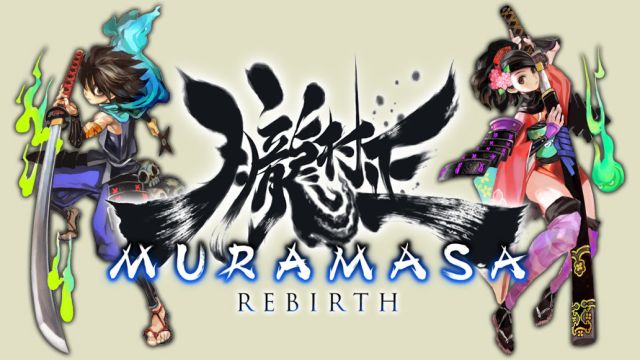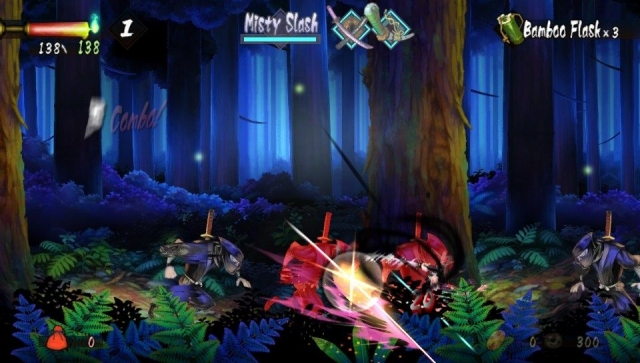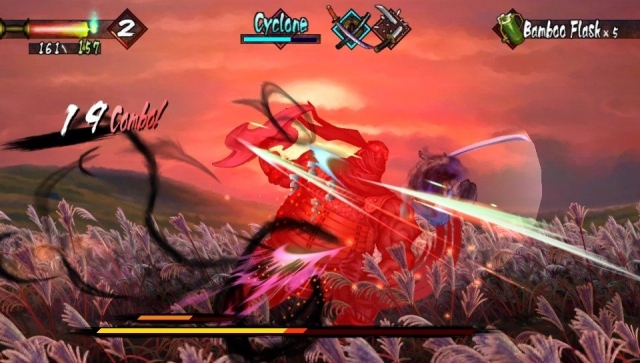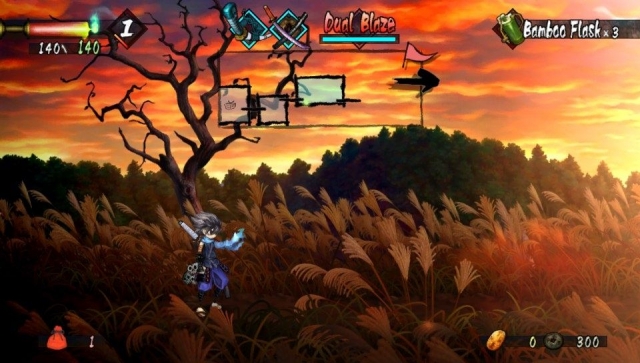Muramasa Rebirth

Muramasa: The Demon Blade hit the Wii four years ago and immediately dazzled with a hand-painted art style heavily reminiscent of Vanillaware’s PS2 cult classic Odin Sphere. Beyond the surface elements that shined in screenshots, those who played it were rewarded with a fast-paced blend of an action RPG, platformer, and beat-em up that let you play as two different characters in feudal Japan and experience two completely different campaigns, complete with multiple endings for each character.
The Vita remake takes a game that has held up very well on the Wii, especially with the Wii U’s HD upscaling, and remasters not only the graphics, but optimizes the controls as well. Before, you had to press up to jump – ala Kung Fu on the NES. Even back then, it was hard to get used to such a radical change and that habit was tougher to break with so much more time spent on platformers with a more traditional control scheme. Now, X jumps and feels far more natural to use. It makes the game as a whole much easier to play, and allows for better control of your character mid-battle since it’s a bit easier to jump exactly where you want without having to worry about an errant d-pad press sending you in the wrong direction. Square is your primary slash button, while Triangle allows you to swap out a damaged blade for a fresh one while letting the battered one heal, and Circle unleashes a special attack.
The combat system may sound simple, but there’s a parrying mechanic that rewards precision with projectile knockbacks and damage reduction for effective blocking. Parrying things like bombs or flames back at rivals is a lot of fun and makes some tougher boss battles not only easier, but also lets you conserve your healing items for later, harder battles. Combos also let you dole out more damage and air juggling can knock out enemies before they even hit the ground.
The end result is combat that is easy to learn, but takes some time to master and makes every major battle won feel like an accomplishment. The core combat mechanics are the same for each character, so switching from Momohimi, the princess, to Kisuke, the ninja is fairly seamless. However, Kisuke’s weapons tend to do more damage, while Momohimi, like Princess Peach, has the ability to float. Fortunately, she doesn’t attack with a frying pan, but instead uses a variety of swords to get the job done. Both characters have dozens of blades available to them, and you can forge new ones to increase their power over time.
Each character’s story revolves around losing one’s memory and the affects of it, with each character’s greater goal also involving the Demon Blades. Given that the original game was named after them, it’s fairly safe to assume that they’re really powerful and bring about chaos. The stories for each are serviceable, but not particularly compelling. They are aided a bit by Rebirth’s new translation, which is more fined-tuned and fixes some of the original’s wonky language to make the stories easier to understand.
Muramasa’s graphics on even the Wii’s hardware still look great, and the redone visuals pop even more on the Vita’s OLED screen. It brings out the lush color scheme and makes you appreciate the color gradient present. Unfortunately, it also showcases some of the smaller visual imperfections – like characters sometimes appearing to stand in front of a tree instead of on it. Little issues aide, it’s impossible to not look at the game and be dazzled. Movement and attack animations are quite smooth, and more clothing and facial details are evident now than before. The remastering shines brightly on the Vita, but it’s impossible to play this and not wonder how good it would look as a PSN download for the PS3 as well. Then you could enjoy the revamped visuals on a massive screen, where they’d look even better. Still, this is a gorgeous game and among the best-looking on the Vita thus far.
The wooden instrument-heavy soundtrack from the original remains perfect for the game, and while playing you can’t imagine any other music working as well. Afterwards, it may not be something you’ll put in your mp3 player’s playlist, but during the adventure, it’s excellent. The Japanese-only audio track might upset those wanting to only hear English in a game, but this setup makes far more sense given the setting and adds a layer of authenticity to it.
Muramasa Rebirth is about as good a remake as one could realistically hope for on the Vita and a must-buy for anyone who enjoyed the original release but wished it controlled better than it did. If you’re completely new to this game, but enjoyed Odin Sphere, then you’ll like this. If you haven’t played any of them, then you might want to wait for a price drop, as $40 is quite a lot of money to pay for a game you may not enjoy. There’s a lot to like about this game, but it’s also not for everyone and there’s no guarantee you’ll enjoy it even if you like action-platformers.
Reviewed By: Jeremy Peeples
Publisher: Aksys Games
Rating: 85%
——————————————————————————–
This review is based on a digital copy of Muramasa Rebirth for the PlayStation Vita provided by Aksys Games.
 Game Over Online
Game Over Online











